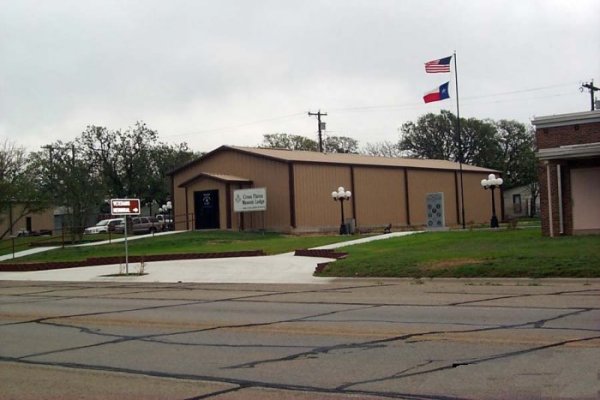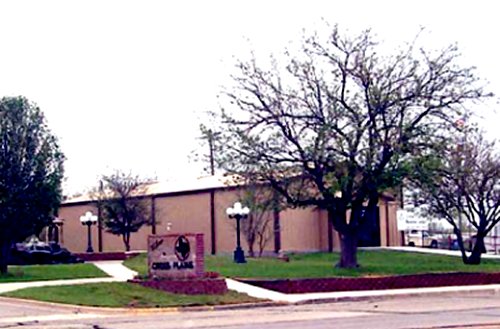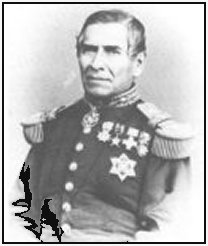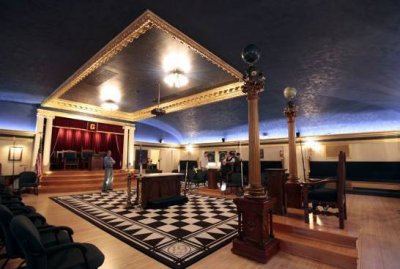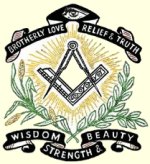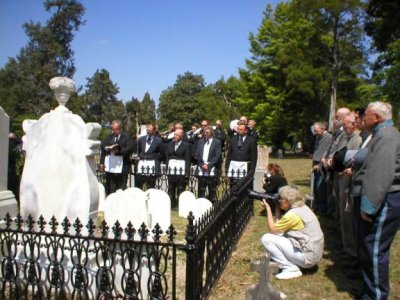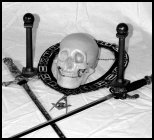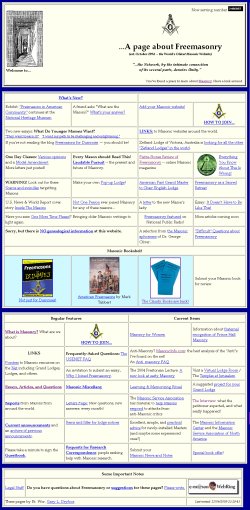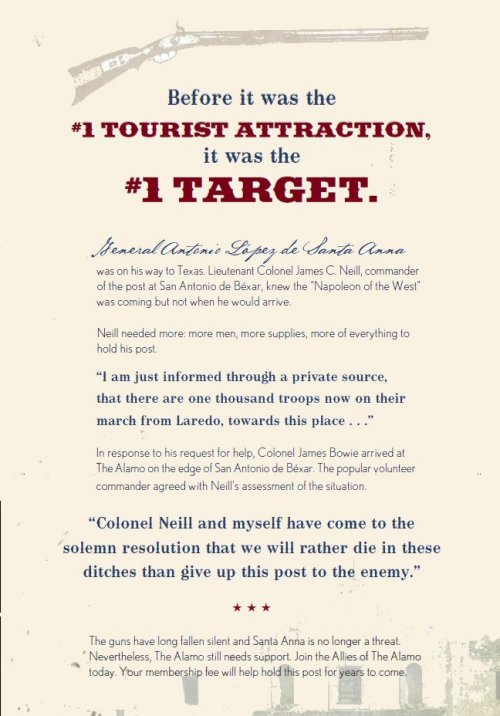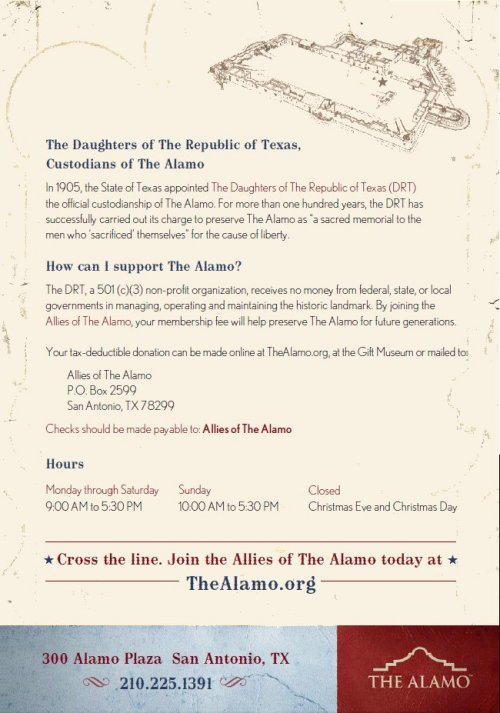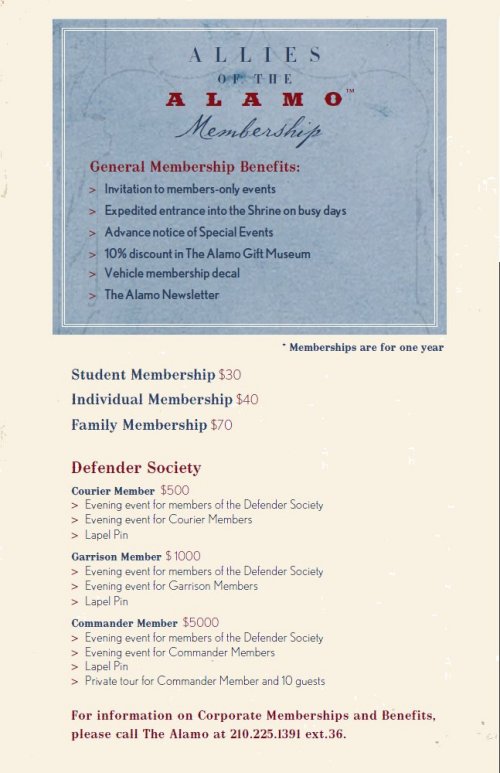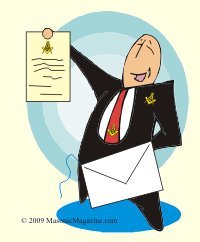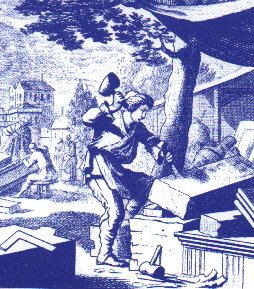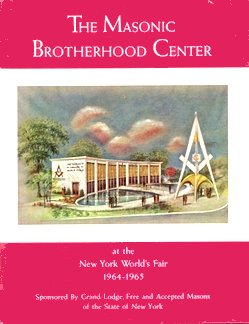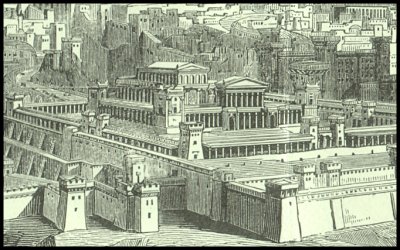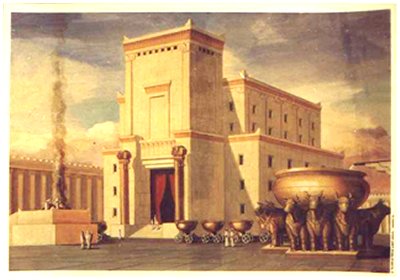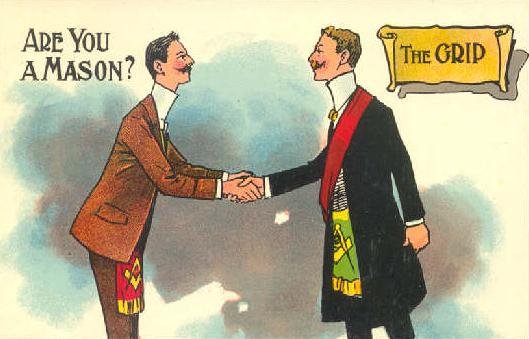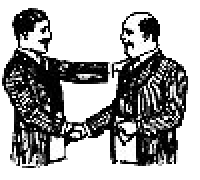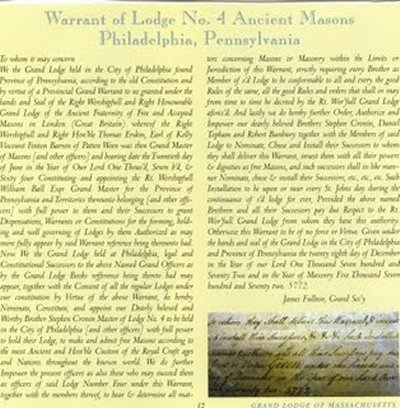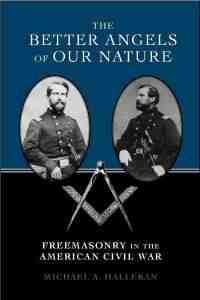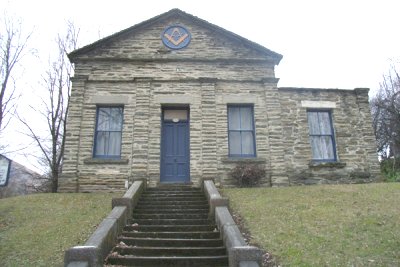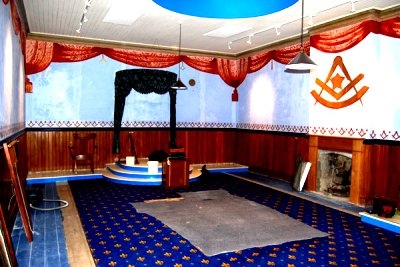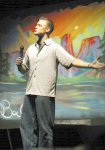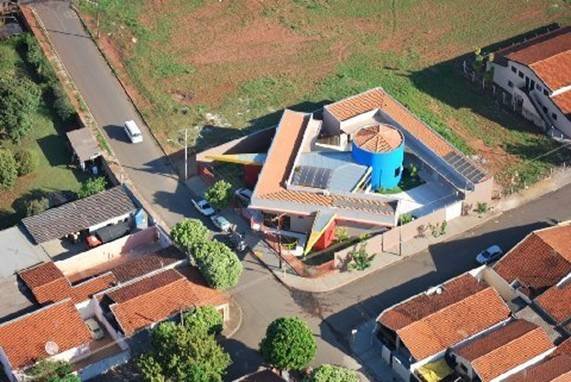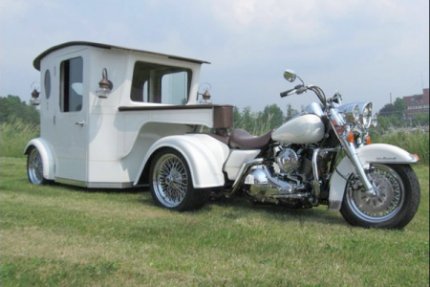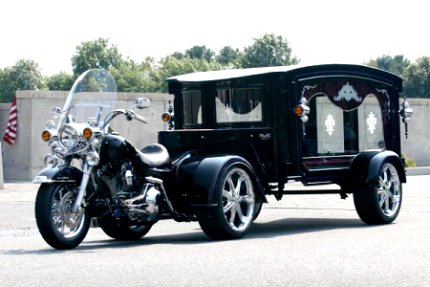
|
March 2010

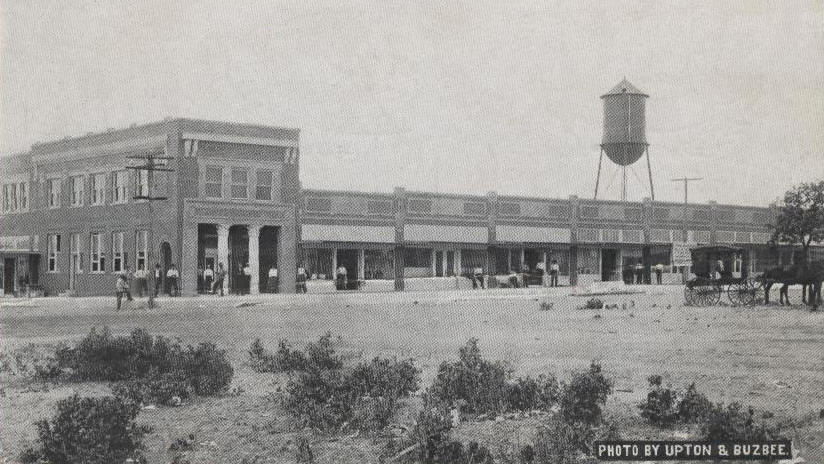 Main Street, Cross Plains, Texas, early 1900s
Cross Plains Lodge No. 627, A. F. & A. M.
|
|
Page II | |||||||||
|
This Small Town Texas Mason's E-Magazine is not affiliated with any state Grand Lodge or individual Blue Lodge. It was created to enlighten, educate and entertain Masons and non-Masons alike. As title suggests, each issue will feature a small town Texas Masonic Lodge and some Texas Masonic history or hero in each issue The beliefs, ideas and opinions expressed here are strictly those of the authors and not necessarily those of the editor, any individual Blue Lodge or any state Grand Lodge.
A very sincere effort was made to avoid using any copyrighted material, without permission or giving credit to the author, in the creation of this web site. If you discover something that is yours, without giving you due credit, please let me know and due credit will be given or the item will be replaced.
Any material in this site may be used to increase the understanding of Freemasonry.
Story tools: |
Cross Plains Lodge No. 627, A. F. & A. M.
A Mexican's Story of San Jacinto
The Secret Society Series - TheThird of Six
Masonic Funerals – Understanding Our Duty
The Really Great Masonic Educational Web Sites Series
Solomon and the Temple - Beyond the Craft.
Prince Hall, Myths, Legends And Facts
The Birth of Free-Masonry; the Creation of a Myth Part 2 of 6
The 1964-65 World's Fair and Freemasonry
Freemasons Look To Build Presence At George Washington University
Document Discovery Sheds Light On First American Grand Lodge
Boy Scouts Celebrate 100th Year Anniversary
Freemasons Find National Treasure In Arrowtown
| ||||||||
|
Page IV | ||
A Mexican's Story of San Jacinto
Delgado was a colonel on Santa Anna's staff, and he wrote this account in 1837. It is the most vivid description of the battle which we have from the Mexican standpoint.)
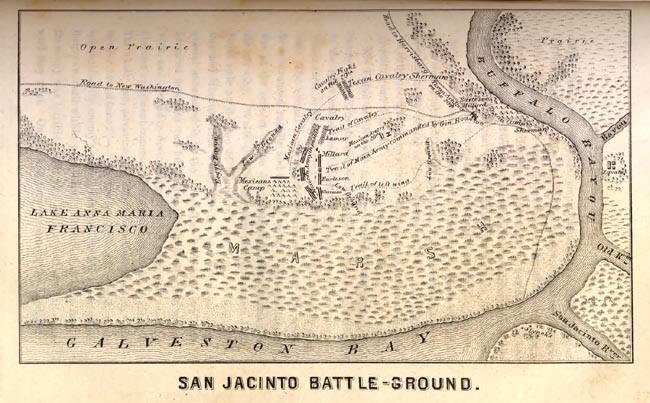 At daybreak on the 2ist, His Excellency ordered a breastwork to be erected for the cannon. It was constructed with pack-saddles, sacks of hard bread, baggage, etc. A trifling barricade of branches ran along its front and right. At 9 o'clock a. m. General Cos came in with a rein- reinforcement of about 500 men. His arrival was greeted with the roll of drums and with joyful shouts. As it was represented to His Excellency that these men had not slept the night before, he instructed them to stack their arms, to remove their accoutrements, and to go to sleep quietly in the adjoining grove. No important incident took place until 4:30 p. m. A line of At this fatal moment, the bugler on our right signaled the advance of the enemy upon that wing. His Excellency and staff were asleep; the greater number of the men were also sleeping; of the rest, some were eating, others were scattered in the woods in search of boughs to prepare shelter. Our line was composed of musket stacks. Our cavalry were riding, bareback, to and from water. I stepped upon some ammunition boxes, the better to observe the movements of the enemy. I saw that their formation was a mere line in one rank, and very extended. In their center was the Texas flag; on both wings, they had two light cannons, well manned. Their cavalry was opposite our front, overlapping our left.
Then, already, I saw our men flying in small groups, terrified, and sheltering themselves behind large trees. I endeavored to force some of them to fight, but all efforts were in vain - the evil was beyond remedy; they were a bewildered and panic stricken herd. Then I saw His Excellency running about in the utmost excitement, wringing his hands, and .unable to give an order. General Castrillon was stretched on the ground, wounded in the leg. Colonel Trevino was killed, and Colonel Marcial Aguirre was severely injured. I saw also the enemy reaching the ordnance train, and killing a corporal and two gunners who had been detailed to repair cartridges which had been damaged on the previous evening. Everything being lost, I went - leading my horse, which I could not mount, because the firing had rendered him restless and fractious - to join our men, still hoping that we might be able to defend ourselves, or to retire under the shelter of night. This, however, could not be done. It is a known fact that Mexican soldiers, once demoralized, can not be controlled, unless they are thoroughly inured to war. On the left, and about a musket-shot distance from The our camp, was a small grove on the bay shore. Our disbanded herd rushed for it, to obtain shelter from the horrid slaughter carried on all over the prairie by the blood-thirsty usurpers. Unfortunately, we met on our way an obstacle difficult to overcome. It was a bayou, not very wide, but rather deep. The men, on reaching it, would helplessly crowd together, and were shot down by the enemy, who was close enough not to miss his aim. It was there that the greatest carnage took place. Upon reaching that spot, I saw Colonel Almonte swimming across the bayou with his left hand, and holding up his right, which- grasped his sword. I stated before that 1 was leading my horse, but, in this critical situation, I vaulted on him, and, with two leaps, he landed me on the opposite bank of the bayou. To my sorrow I had to leave the noble animal, mired, at that place, and to part with him, probably forever. As I dismounted, I sank in the mire waist deep, and I had the greatest trouble to get out of it, by taking hold of the grass. Both my shoes remained in the bayou. I made an effort to recover them, but I soon came to the conclusion that, did I tarry there, a rifle shot would certainly make an outlet for my soul, as had happened to many a poor fellow around me. Thus I made for the grove, barefooted. There I met a number of other officers, with whom I wandered at random, buried in gloomy thoughts upon our tragic disaster. We still entertained a hope of rallying some of our men, but it was impossible. The enemy's cavalry surrounded the grove, while his infantry penetrated it, pursuing us with fierce and blood-thirsty feelings. Thence they marched us to their camp. I was bare-footed; the prairie had recently been burnt up, and the blades of grass, hardened by fire, penetrated like needles the soles of my feet, so that I could hardly walk. After having kept us sitting in camp about an hour and a half, they marched us into the woods, where we saw an immense fire. I and several of my companions were silly enough to believe that we were about to be burnt alive, in retaliation for those who had been burnt in the Alamo. We should have considered it an act of mercy to be shot first. Oh! The bitter and cruel moment! However, we felt considerably relieved when they placed us around the fire to warm ourselves and to dry our wet clothes. We were surrounded by twenty-five or thirty sentinels. You should have seen those men, or, rather, phantoms, converted into moving armories. Some wore two, three, and even four brace of pistols; a cloth bag of very respectable size filled with bullets, a powder horn, a saber or a bowie knife, besides a rifle, musket, or carbine.
Was this display intended to prevent us from at- Afraid to escape, tempting to escape? The fools! Where could we go in that vast country, unknown to us, intersected by large rivers and forests, where wild beasts and hunger, and where they themselves would destroy us?
|
|
Page V | |
|
Not-so-secret society
By Kristine Tillotson
| |
 A New Series Freemasonry Means Different Things To Different Brethren By Very Worshipful Bro. Don Paterson
Don's views would not always be shared by his masonic readers, but in an organisation which accepts and values diversity and different opinions, there is an important place for discussion and ideas in Freemasonry. Don has been the inspiration for many discussions and advances at Devotion and in Freemasonry.
He looked and acted as though he was very important wearing his dark blue apron with gold braid and a gold chain across his shoulders. He paced up and down the black and white squares on the carpet with great confidence in that tired old masons' temple in one of the south-eastern suburbs. He volunteered that Freemasonry was a peculiar system of morality, veiled in allegory and illustrated by symbols. He went on for some 20 minutes or so…“…brotherly love, relief and truth” and all those other clichés that then were so meaningless to me. He was addressing about 20 friends of Freemasons including me who I suppose were invited as prospective members. But that was as far as he was prepared to go.
When he put down firmly the first question about something in the lodge room with “…you will learn more about that if you join” there were no more questions. When we went downstairs for a cup of tea he enjoyed being the centre of attention among masons and made no effort to talk to the visitors. Nobody noticed when I and others quietly thanked our hosts and departed. I did not seek to be a member nor did anyone else so I was told – I was later told the new members' day was a failure. It seems to be all about the importance of the speaker. I still cringe today in the company of active Grand Lodge officers like him and they are still around. But the unanswered question then remained –“what is Freemasonry?”
Freemasonry means different things to different brethren. For some it is a way of serving the community, some like the ritual – the theatre, the pomp and ceremony, others like the administrative responsibility, some simply want something to fill their lives each day during the evening. All of these things and other reasons are important to the individual but there is a common thread through all masonic activities.
You will always be with men with whom you are likely to be comfortable. In a Lodge you will always be wanted and missed when you do not attend. The tasks, whilst not too demanding, will keep your mind active. It is a great “equalizer” – there is always someone there who has been blessed with more fortune than you and always somebody who is worse off. There is always someone to emulate and someone worthy of your assistance or compassion. You will meet people of all ages, races, cultures, religions and you will be able to improve your understanding of mankind and have the basis for self examination. You can travel and visit under the banner of Freemasonry, expanding your experience and enjoyment as in no other way. You will be able to lift you head as a mason, knowing that you are part of a worldwide benevolent fraternity, steeped in history and tradition and of immense standing today. None of these things are masonic secrets.
If I, as a friend of a mason, had been told this all those many years ago in different circumstances I would have tried to join immediately. |
|
Page VI | |
|
by W:.Tim Bryce, PM, MPS
Having said this, my thoughts turn to Masonic funeral services in general. I have attended many such services over the years and I have found them to be greatly appreciated by the families of the deceased. Many are overwhelmed by the love and support the Masons express during the service. As far as I'm concerned, attending a Masonic service is the very least we can do for a Brother, regardless if he is a local member or from a distant jurisdiction. I am always amazed how some Brothers are unwilling to attend such a service. Many mistakenly believe they have to belong to an Acacia/funeral committee in order to participate. In reality, it is our duty as a Mason to attend such a service whether we know the Brother or not. I realize some services are performed during the day when many of us are working and unable to attend. But aside from this, if there is a Masonic service to be performed, and our cable-tow permits us, we should be in attendance.
Many claim they simply are unaware of the passing of Brothers. All you need to do is browse the obituaries of the local newspapers, either the printed form or on the Internet. As for me, I have bookmarked the obituary sections of the local newspapers and regularly scan them using keywords such as “Mason” and “Lodge.” When I come upon a Brother from a northern jurisdiction, I e-mail the obit to his Grand Lodge and, if I can find it, his home Lodge. As a past Secretary myself, I know this is very much appreciated.
Regardless if you scan the obits on the Internet or in the printed version, there should be at least one person in your Lodge charged with monitoring the passing of Masons. Although the Worshipful Master should be made aware of the passing of a Brother, the responsibility is typically delegated to the Secretary, the Chaplain, or the chairman of your funeral committee.
Also Brothers, please dress properly for a funeral. In Florida, for example, it is customary to wear a dark suit and tie; a tuxedo is not considered appropriate, nor are dungarees and shorts. Plain white aprons are the norm, not Lodge officer or Past Master aprons. Funeral committees usually make aprons available to Masons attending the service, but you may also want to bring your own in case they run short of aprons.
Prior to the funeral, the Brother's Masonic background should be verified by his home jurisdiction, so that we might know more about the Brother and assure he is in good standing with his Lodge.
If you become involved with a committee charged with performing a Masonic funeral service, be sure you know your responsibilities, your lines (if any) and how to deport yourself during the service. Rehearsals are invaluable to assure the service comes off polished and dignified. Further, talk with the clergy or funeral directors involved prior to the service to assure the ceremony is well organized and runs like clockwork.
Attending or performing a Masonic service is not complicated, nor is it time consuming. And I can tell you this, a little dignity, a little polish, and a little sympathy is very much appreciated by the family of our departed Brother.
Keep the Faith.
| |
|
By: Roger.A.Barnstead
Freemasons and Knight Templers and all sorts of secret societies! Oh my!
There is a deep seated human need to believe that somewhere, someone or group of some ones has a secret and knows exactly what they are doing and have a master plan on how to achieve their ends.
Always meeting in secret. Exchanging secret handshakes and secret words. I remember Groucho Marx's old TV Show “You Bet Your Life” where if you said the secret word you would win one hundred dollars. I'll tell you that never happened to me! Marx was on to something when said; “I don't care to belong to a club that accepts people like me as a member”. And also “Whatever it is, I am against it”.
So what do you think those men in black tuxedoes and top hats are really talking about inside of their meeting? I mean there is a guy outside the door armed with a sword and you have to know the secret knock to get inside the door! Are they talking about taking over the world? The new new new world order?
Well I am going to tell you. After all I have been a Freemason for a long time now. I think it is only fair to share the last real secret in Freemasonry with the general public.
The real secret is just how masons are going to show up for…………..dinner.
No one knows the answer to that!
|
|
Page VII | |
This Month - A Page About Freemasonry By Corky 
The "A Page About Freemasonry" web site was one of the first web sites that I used years ago to find Masonic material for the Hempstead #749 AF & AM newsletter. I started writing it back in 2000 so I have be using the site for about 10 years and I still go back every so often. The Google Search engine states, A Page About Freemasonry is "The world's oldest Masonic website. Comprehensive information about Freemasonry for both members and curious non-members. A Guestbook, History, Links to How to Join - What is Masonry - What's YOUR Answer. I love the layout of the site. It is very simple without waving flags it kind of reminds me of shopping at one of the old downtown 5 and 10 cent stores many years ago. For those who haven't had that pleasure, those stores had rows of counters. Each counter had items of a particular type, one for toys, one for sewing notions, one for women's makeup, one for books, one for candy and nuts and on and on. You could wander up and down the aisles between the counters for an hour exploring the wonders you could buy for a nickel or a dime. Don't let the size of the main page fool you. The titles in the link boxes hide a multitude of Masonic wonders. And, there are more than fifty of them. For instance, the box titled "Make your own Pop-up Lodge!, click on it and you find it contains 47 other assorted papers. The section entitled Essays, Articles, and Questions has over 100 pages. So don't be afraid to explore the different sections.
All in all, Brother Rt. Wor. Gary L. Dryfoos has created a very valuable Masonic resource over the years. I strongly recommend spending some ti there for Masonic research and/or just plain reading. | |
|
From The Tracing Board
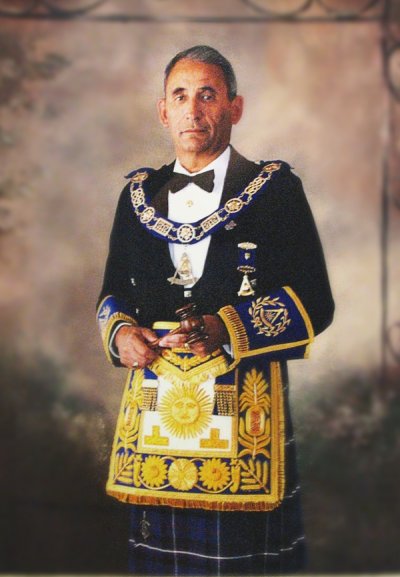
Grand Lodge of Saskatchewan
1. Garter Blue, represents Universal Brotherhood and
Friendship, and also symbolizes the infinite wisdom
of God.
2. Gold trimmed with metal and metallic embroidery
fringe including the edge of the flap.
3. There are three of The Masters’ Square each of
which are two right angles.
4. Seven Ears of Corn. The bread of life.
5. Acacia - Symbol of Immortality of the Soul.
6. Two Tassels - which are thought to represent the
ends of the cord used to tie the Apron in earlier
times. From each Tassel are Seven Chains, that
represent the seven stars, the days of the week,
the years in took to build Solomon’s Temple, the
years of Apprenticeship, the Seven Liberal Arts,
and it represents the number require to make a
Lodge perfect.
7. Blazing Sun in the Centre.
8. The flap and the Four Corners are embroidered
with seven-eared wheat. Also embroidered are
lotuses and pomegranates.
9. Symbolically the lotus has been a sacred symbol
since antiquity, emblematic of the residence of
Eastern Gods.
10. Pomegranates - Symbol of plenty and fertility and
to symbolize the hope for immortality and
resurrection. |
|
Page VIII | |
To All Masons of Texas From Dick Brown - Chairman, Texas History Committee
{Editor; It's to late for the event, but you can still help the program.]
On Tuesday, February 23rd (the day in history that the Siege of the Alamo
began) the Daughters of the Republic of Texas will begin a monumental project
to assure the survival of Texas' most significant shrine. The "Allies of
the Alamo" project will bring Texans together to provide necessary funding to
support the operation and upkeep of the Alamo and grounds.
To kick off the membership drive, there will be a depiction of Col. William
Barrett Travis drawing a line in the sand. Just as it was done in 1836 to
assure Texas' preservation, the symbolic act of drawing the line in the sand
and asking all who would fight to preserve the Alamo to "step across the
line"... will assure the preservation of the Alamo. The Masons of Texas
are especially honored to have been chosen to provide the representative who
will draw the line in the sand. PGM David Counts has been asked, and has
agreed to perform this symbolic act. . .
| |
|
Page IX | |||
From The National Heritage Museum
When a man (or in some cases, as we've written elsewhere, a woman) joins a local Masonic lodge, he goes through three ritual ceremonies, known as "degrees." Often referred to as the Symbolic Degrees - Entered Apprentice, Fellowcraft, and Master Mason - these three degrees are thematically joined by the story of the construction of Solomon's Temple. A person going through each of these degrees is known as a candidate, and one thing that the candidate must demonstrate before being allowed to progress to the following degree is that he is "proficient" in the preceding degree. Proficiency, in short, is evidence that he has memorized the candidate's portion of the ritual and, with any luck, understands what he is saying, rather than simply reciting the lines. This proficiency is demonstrated before the members of the lodge he is joining, in the ritual degree ceremonies which involve the participation of the candidate and the officers of the lodge. Although Masonic ritual is often taught "mouth to ear" through an oral tradition of having an older Mason instructing a new candidate in preparation for his ritual degree ceremony, this learning is often augmented by the use of a ritual or cipher book. We've written about rituals before, but all of the ones we've addressed so far have been printed in plain, easy-to-read English. In American Freemasonry, however, there is a long tradition of Masonic ritual books being published in cipher.
Ok, but why publish the rituals in cipher (an example of which can be seen here) in the first place? Part of the answer has to do with a candidate's vow not to "write, print, paint, stamp, stain, cut, carve, hew, mark, or engrave" the secrets of Freemasonry and therefore make them easily available to non-Masons. Putting aside the fact that non-cipher Masonic ritual exposures have been around since the 18th century - and that many of the consumers of these exposures were likely Freemasons themselves who were happy to have a written script to help them memorize ritual - a tradition of personal honor linked to not revealing that which you've vowed to keep secret, led, in part, to the use of ciphers. Ciphers are essentially gibberish to those who have not memorized the ritual to begin with, but to those who know (or who have mostly
In addition to being written in cipher, many ritual books published in the late 19th and early 20th centuries also had titles that, arguably, are designed to make non-Masons unaware that the book contained Masonic ritual. Two of the most popular titles from that time period have titles that might easily confuse a non-Mason who stumbles across them: Ecce Orienti: An Epitome of the History of the Ancient Essenes, Their Rites and Ceremonies; and King Solomon and His Followers: A Valuable Aid to the Memory, Strictly in Accordance with the Latest Authors. In addition to perhaps adding to the perceived mysteriousness and secretiveness of Masonic ritual, these books also served the purpose of not revealing any secrets that a Mason promised to keep, on the off chance that a cipher was casually left around the house or accidentally lost. (The use of these books were sometimes silently condoned, but in other cases - as with the Grand Lodge of Massachusetts in 1885 - their use was condemned in "very impressive and forcible language.") That all said, to the uninitiated, a cipher is not going to quickly reveal its contents. A gem from our collection, that also reveals some of the humor used in creating some of these misleading titles, is a ritual cipher entitled Magicians' Magic Movements and Ceremonies, published in 1915 by Allen Publishing in New York (and shown in both illustrations above). The book is, in actuality, a cipher for the ritual of the Symbolic Degrees as practiced by the Grand Lodge of Michigan. (And here we need to give a big tip of the magician's hat to John M. Karnes, a ritual collector who helped us geographically identify this ritual cipher, something that had us stumped.) In the past, as well as today, rules and regulations regarding ritual and cipher books vary from state to state. Each state's Grand Lodge has its own rules and regulations for all of the lodges that it oversees in that state. Paul Bessel has an interesting map and chart that illustrates each U.S. Grand Lodge's views regarding the use of printed rituals and/or ciphers in that state's local lodges.
And, finally, if you start searching around the web for Masonic ciphers, you will quickly encounter the "pigpen" cipher, which is also sometimes called the Freemason's cipher. This, indeed, is a cipher code that was once used in Freemasonry, although it is completely different from the type of cipher we're writing about in this post. More on this other cipher perhaps, in a later post. |
|
Page X | ||
|
Then what happens?
For some the study of Freemasonry, the practice of its rituals, and the contemplation of the lessons learned become a lifelong pursuit. The badge of honour with which they were invested is but the beginning of a long and wonderful Masonic journey for them.
Some Brethren keep the same apron for the rest of their lives doing their best to make sure they always fit the apron. By helping whenever needed, being good men and upright citizens, exemplary husbands and fathers; their conduct as men and Masons ensures that they always fit the apron.
Some truly dedicated craftsmen seem to fit the apron so well that other, more colorful, aprons start to seek them out. These are the Masons that other Masons revere as our leaders and who, by following their example; all Masons become better men. This type of dedicated Mason fits every apron they will ever wear.
For some however that "Badge of honour" once so proudly worn and carefully put away after each meeting, begins to get a little loose on them. They stop attending Lodge for any number of reasons or they do not want to do the duties they were charged to fulfill when they were first given their apron.
Perhaps they only joined for the apron, or the right to say they belong to the Masonic Fraternity. This type of Brother will pay his dues to keep up his membership thinking he is doing his part, but sadly will do nothing more. It is often said, "we get more out of Masonry than we put into it," which is obvious to those many members who get so much out of Freemasonry and yet put little or nothing back. One cannot continuously make withdrawals from the Bank of Freemasonry without being willing to make at least the occasional deposit.
These members do not fit their aprons.
Most of us know how well our apron fits when we put it on. Sometimes the apron belt needs to be stretched but sometimes we need to stretch too. The question should not be how well does our apron fit us, but how well do we fit our Masonic apron.
Brethren, how do you fit your apron?
If you are finding it a little too loose these days then change what you have to so you may fit the apron once again. Stretch yourself a bit instead of stretching the belt. As we all learned as apprentices, "being the badge of innocence and the bond of friendship. I strongly recommend you ever to wear and consider it as such; and be assured that if you never disgrace that badge it will never disgrace you." | ||
|
A group of GW alumni that believe in the teachings of the Masonic people are looking to start a Freemason Lodge on campus, said Paul Nadeau, a 2004 graduate of the Elliott School of International Affairs. A Freemason Lodge is not a literal building, Nadeau said, but rather it is a chapter of Freemason people, similar to a fraternal organization.
"The word 'lodge,' in a Masonic sense, applies to a local assembly of Masons rather than to a physical structure," Nadeau said in an e-mail, adding that while there are alumni from the Colonial Lodge, no current students are members.
Any GW students, faculty, staff and alumni would be welcome to join, Nadeau said, with one exception - membership excludes women.
University President Emeritus Stephen Joel Trachtenberg - who follows the Freemason teachings - said an official chapter on campus would be very similar to a service fraternity and would be involved in many public service-related activities.
A Masonic Lodge on campus could "add value to a [college] degree," Trachtenberg said, adding that in an era where more and more students are becoming interested in the field of public service, "doing things for one's country are a part of an undergraduate and graduate experience."
Nadeau said there are about 40 physical Masonic temples in the U.S., including the Georgetown Masonic Hall, located above the Abercrombie & Fitch on M Street, but there are many more Masonic groups.
While Freemasonry is a foreign concept to most students at GW, Nadeau said that the Freemason practices and teachings are more pervasive than many students would think.
"Numerous cornerstones of GW's old and new buildings have been dedicated with a Masonic ritual ceremony performed by the Grand Lodge of Washington, D.C.," Nadeau said, noting that the Elliott School and Townhouse Row are among them.
Nadeau also noted that George Washington himself was a Freemason.
Nadeau said the Masons seek out members of good character, or patriotic citizens who seek civil justice and strive to serve their community. Membership in a Masonic Lodge is based upon two requirements: belief in a supreme being and being male, though Nadeau did say that some Masonic organizations will admit women.
In order to obtain membership in the Colonial Lodge, a prospective member must ask the other members of the lodge to join. The applicant fills out a petition, goes through an interview process, and their candidacy is voted on by the current lodge members. The applicant then goes through a series of three rituals to test their motives for joining.
Nadeau said regardless of one's age upon membership, all persons communicate and are treated on an equal level. |
|
Page XI | ||
MYTH: Prince Hall was born in Bridgetown, Barbados, B.W.I. His father Thomas
Prince Hall, was an English leather worker, and his mother, a free colored
woman of French extraction.
FACT: To date there has never been any proof of the birth place, or who the
parents of Prince Hall where. To date there has only been speculation.
MYTH: The Initiation of Prince Hall and fourteen other men of color was
illegal.
FACT: What constituted a legal Mason prior to the formation of the Grand
Lodge system in USA? There were none before 1778 when the Grand Lodge of
Virginia was instituted. Before then there were Provincial Grand
Lodges–several of them. In Massachusetts there were two such bodies. One
held allegiance to the “Modern” Grand Lodge of England; the other, the Grand
Lodge of Scotland. Studying the works of Henry Wilson Coil, Melvin Maynard
Johnson, J. Hugo Tatsch, Harry Carr and many others we find there were
hundreds of “illegal” Masons in the early days of Freemasonry in America.
For example, where were the members of the lodge that met in Philadelphia in
1731 (and perhaps earlier) made Masons? Was Benjamin Franklin, who was made
a Mason in this lodge, illegal? No of course not.
MYTH: African Lodge which the men of color formed was illegal.
FACT: Freemason's proudly proclaim the supremacy of the Grand Lodge of
England. It was the Grand Lodge of England that granted a warrant on
September 29, 1784 for African Lodge No. 459, and this warrant is still in
existence.
MYTH: African Lodge had no right to warrant other lodges and form a Grand
Lodge.
FACT: Let us look at the Lodge at Fredericksburgh VA. It warranted two
lodges: Falmouth and Botetourt. Those Lodges helped form the Grand Lodge of
Virginia, and both are still in existence. What did the only lodge in
Massachusetts do after 1733? Did it not form a Provincial Grand Lodge and
then warrant other lodges, and not only in Massachusetts? Why should African
Lodge be refused the same privilege?
MYTH: African Lodge's Warrant did not give them the right to Make Masons.
FACT: Africa Lodge No. 459's Warrant was no different from any other Warrant
issued by the Grand Lodge of England.
Below is a copy of that Warrant.
MYTH: African Lodge was erased by the United Grand Lodge of England.
FACT: So was every lodge in America still on the roles of either of the
rival Grand Lodges. This included about half of the lodges in Massachusetts!
Has any critic dared claim all other American lodges erased from the roster
of the United Grand Lodge of England are clandestine?
MYTH: African Lodge was dormant for a number of years and therefore is
illegal.
FACT: So were numerous other lodges. Research the anti-Masonic craze
beginning in 1826. Check out the vast number of lodges giving up their
charters. Hundreds of them came back into the fold with no condemnation. Why
should they be privileged and African Lodge not?
MYTH: Prince Hall Grand Lodges are not Regular:.
FACT: Prince Hall Freemasons as do all Regular Freemasons adhere to the
“landmarks”.
l. its Brethren must believe in a Supreme Being [the
GAOTU];
II. Obligations must be taken on or in full view of the VSL.;
III. it must display the three Great Lights of Freemasonry when
it or its Lodges are open;
IV. discussion of religion and politics in its Lodges must be
prohibited, and
V. its membership must be male, and it must have nothing to
do with mixed or women's Lodges.
MYTH: Prince Hall Grand Lodges only accept men of color, and “Mainstream”
Grand Lodges only accept Caucasian men.
FACT: I. John Pine, a black Freemason, who in 1769 designed the
frontispiece for Anderson's Constitutions.
II. Canadian Grand Master by the name of Charles Lightfoot
Roman, Grand Lodge of Quebec, was a black Freemason.
III. The proceedings of The Most Worshipful Prince Hall Grand
Lodge of New York, 1871 provide us a record of a Lodge of German Jews
working under the authority of this Prince Hall Grand Lodge.
IV. Alpha Lodge No. 116, F. & A. M. Grand Lodge of New Jersey
[Mainstream] is comprised of Black Masons.
V. The United Grand Lodge of England, The Grand Lodge of
Scotland, and The Grand Lodge of Ireland have had Provincial Grand Lodges
through out the world, and their membership is not restricted by color.
MYTH: Prince Hall Grand Lodges only accept men who are Christians.
FACT: This is a question of Regularity. Since it has already been determined
that Prince Hall Lodges are Regular, for us to practice or teach this would
be against the Ancient Landmarks of our order. [see Landmarks above] In
1787, Prince Hall forwarded a copy of “The General Regulations of the
African Lodge to D.G.M. Roland Holt in London, with the very first item
declaring, “. yet at the same time allow every man to join his own religion
so that they be men of Honour and Freeborn.”
MYTH: Prince Hall Grand Lodges have women members.
FACT: That would be a violation of the Landmarks and Prince Hall Affiliated
Freemasons adhere to the Ancient Landmarks [see Landmarks above]
|
|
Page XII | ||
Continued From Page XI
FACT: Again this would be a violation of the Landmarks. [see Landmarks above] It is unfortunate that there exist in this world spurious and even out right clandestine organizations who dare travel under the name of Freemasonry and use the most immoral and un-Masonic acts in her name and in the name of Prince Hall. MYTH: William Harry Grimshaw's, “Negro Freemasonry… ” and books that quote this book are a reliable source for information about Prince Hall Freemasonry. FACT: Grimshaw's purpose was sound when he wrote this book. Grimshaw theorized and wrote what had been handed down to him from years of word of mouth teaching. Unfortunately, his theories and teaching were corrupted. An accurate comparison would be the ritual, which has developed in North America. There is no question that word of mouth rituals are not the same ritual dictated to Ben Franklin. MYTH: Prince Hall Grand Lodges have chartered Lodges in other Grand Lodges' Jurisdictions. FACT: Prince Hall Grand Lodges have chartered military Lodges in Germany, Italy, Turkey, and Korea to name a few. The traditional act of chartering a Lodge to service members traveling abroad is well recorded in Masonic history. This has been a practice in Freemasonry since the very beginning of the rebirth in 1717. United Grand Lodge of England, The Grand Lodge of Scotland, The Grand Lodge of Ireland, and many other “mainstream” Grand Lodges have Charted Lodges though out the world in other Grand Lodges' Jurisdictions. MYTH: Prince Hall Masons intermingle politics and Masonry. FACT: Again this would be a violation of the Landmarks [see Landmarks above] However, it is only natural that many prominent black politicians are or have been Prince Hall Masons. Prince Hall Masons by nature are inclined to be involved in their communities, and this extends to the political working. This is done as individuals and not as masons. Prince Hall Masonry has had within it's membership some of the preeminent Blacks in politics. The lists includes such notables as Harold Washington, Chicago; Thomas Bradley, Los Angeles; Andrew Young and Maynard Jackson, Atlanta; all former mayors. Douglass Wilder, the first black elected governor, Thurgood Marshal, and Jesse Jackson, to name a few. MYTH: Prince Hall Grand Lodges do not enjoy full recognition from their Caucasian counterparts. FACT: Most Prince Hall Grand Lodges and their neighboring Regular counterparts do in fact enjoy full recognition. Most of the misunderstanding perhaps is due to the fact that Prince Hall Grand Lodges do not allow dual or plural memberships. This means that members of recognized Grand Lodges can't join as full members. Some Prince Hall Grand Lodges allow honorary memberships. These have a number of their “Mainstream” counterparts as honorary members. Most Prince Hall Grand Lodges do allow their members to belong to Research Lodges. Many Prince Hall Masons belong to national and state Research Lodges. MYTH: Prince Hall Masonry does not contribute to charitable activities. FACT: All branches of Prince Hall Freemasonry support charitable activities. From individual lodges to the Prince Hall Conference of Grand Masters, The Supreme Councils [ SJ & NJ], To the Shrine. Prince Hall Masonry has contributed millions of dollars in such charitable activities as scholarships and medical aid and research. MYTH: All Most Worshipful Prince Hall Grand Lodges are Regular. FACT: Not all Regular Prince Hall Affiliated Grand Lodges are titled as such. The Regular Prince Hall Grand Lodge in the state of Mississippi is, The Most Worshipful Stringer Grand Lodge, F.& A.M. [Prince Hall Affiliated]. The Regular Prince Hall Grand Lodge in the state of Florida is, The Most Worshipful Union Grand Lodge, Free and Accepted Masons, PHA. There are irregular Black Grand Lodges in both these states using the title of Prince Hall Grand Lodge. There are also other such outfits operating around the country. They will usually delineate somewhere in there title Prince Hall Origin. MYTH: Prince Hall Masonry has never bothered to take Irregular Black Grand Lodges to court. FACT: There is a long history of Prince Hall Grand Lodges taking irregular Black Masonic bodies to court. In many of these cases, their Caucasian counterparts, have filed “Friend of the Court” briefs supporting the Prince Hall Grand Lodge's stance. In fact, Prince Hall Masonry has taken every major black Masonic body to court in one state or another and has won injunctive relief in all such cases. These suits span back as far as the 20's and include such bodies as, The Internationals or Banks Organization, The Most Worshipful Universal Grand Lodge; also known as the John G. Jones Grand Lodges, and the John A. Bell Grand Lodges. Virtually all major irregular bodies are the offspring to one of the afore mentioned bodies. There are of course numerous smaller bodies that spring up virtually over night without any governing body. Today Prince Hall Masonry for the most part, has chosen to use it's funds for the betterment of the community as opposed to costly legal battles. MYTH: The Prince Hall Conference of Grand Masters has never or only recently embraced its Caucasian counterparts. FACT: Even before recognitions, Prince Hall Grand Masters have met, worked with, and received their Caucasian counterparts in informal as well as formal and public Masonic events. There is documentation going back to 1970 stating the Prince Hall Conference of Grand Masters received such prominent members as the Grand Master of Mass. AF&AM, and the Sovereign Grand Commander of the Supreme Council, N.J. at it's meeting. MYTH: Prince Hall and its Caucasian counterparts have only recently began to meet formally. FACT: There is much documentation showing that the two bodies have often met formally as far back as 1923 when the two Supreme Councils [N.J.] met. This meeting resulted in the Prince Hall body deciding to change its name to United Supreme Council and add the suffix, Prince Hall Affiliated to it's name to distinguish the two. After the meeting, the Supreme Council [N.J.] Caucasian, issued the following press release. Offer of “Informal Co-operation” Boston, Mass. Sept. 22, 1923 An offer of “informal co-operation” was extended last Wednesday by the Supreme Council A. A. S. R. Masons Northern Masonic Jurisdiction in session in this city to the United Supreme Council [Prince Hall Affiliated] representing Negroes in the United States. Although no official recognition was adopted by the convention, the Supreme Council voted it's policy of co-operation after hearing a report of the legal aspects of the situation arising from the similarity in the names of the two organizations which existed until recently. The United Supreme Council changed its name in order to distinguish it from the organization meeting here. In appreciation of this action and to put itself on record of racial toleration the Council decided to adopt an attitude of co-operation that was generally felt would be advantageous both for the Negroes and the community at large. The work of the two organizations is said to be approximately the same and the colored fraternity which is chartered in Pennsylvania is the Grand East for this organization. These two bodies met again on May 19, 1944 in New York City where a similar resolution was made. The key addition made at this time was the Supreme Council acknowledging that the Prince Hall bodies were legally descended from the Grand Lodge of England and Regular in all Masonic aspects.
Published by Nelson King |
|
Page XIII | |
Reprinted From The Rural Lodge Newsletter
THE WORD FREEMASON Take a map of England, draw a diagonal line across the country from Lyme Regis to the mouth of the Tees [south coast to northeast coast] and it will very roughly represent the broad escarpment of oolitic limestone from which was quarried the freestone used for most of the finest English medieval buildings. Some excellent quality stone was imported from Caen but this limestone belt across England provided the nurseries from which the indigenous craft of the freemason was developed, and mostly to the south of it where the genius of the English Gothic builders flourished. Not so in Scotland where there was little stone of that kind to be quarried and where the word freemason as denoting a native craftsman does not appear to have been used in ancient records. Hence, in the quest for the origin of the name of a member of our society, the starting point is that half of England which included London, the centre of influence; the historic nucleus for the radiation of innovation. In a paper 'The Crisp English Word Freemason' published in AQC 68 the present author, standing on the shoulders of Douglas Knoop and many others, quoted numerous well documented records from 1212 to 1789 and demonstrated anew the derivation and usage of the word as it applied to masons employed in the building trade. It would be tedious and unnecessary to repeat all the data previously given, but the conclusion reached was that the evidence quite decisively showed that freemason in its original form was compounded from freestone and mason, denoting a mason who worked principally on the kind of limestone which can be freely cut and carved with elaborate ornamentation. It is perhaps of interest to note that as long ago as 1851, Orlando Jewitt, a contributor to the Archaeological Journal had reached the same conclusion after examining the building accounts of Wadham College, Oxford. The following constitute only a tiny fraction of the building records in which men called freemasons were linked with the material from which the name of their specialized trade was derived.
The term gained currency on these lines: —
| |
|
From The
But did you know that there was also a Masonic pavilion at the 1964-65 World's Fair? The theme of the Fair was "peace through understanding," and so it seems a natural fit that the Grand Lodge of New York decided to sponsor The Masonic Brotherhood Center, with its theme of "Brotherhood: the Foundation of World Peace." Outside, the pavilion featured 50-foot tall (and very space-agey) square-and-compasses. Inside the building, items on display included the bible that George Washington used when he first took the Presidential oath of office, as well Simon Bolivar's 32nd degree Scottish Rite apron and his 32nd degree Scottish Rite collar. If you go to Flushing Meadows Corona Park in Queens today, you can still see the Unisphere as well as the Tent of Tomorrow, but you won't find too much of the 1964-65 World's Fair beyond that - certainly not those huge square-and-compasses. (Although I'm happy to report that our colleagues over at the Livingston Library at the Grand Lodge of New York inform us that those great space-age square-and-compasses still survive.)
If you've got memories of The Masonic Brotherhood Pavilion, we'd love to hear about them - just share them in the comments below.
Pictured above is a small booklet produced by the Grand Lodge of New York for the World's Fair: |
|
Page XIV | |
By PAT SCHNEIDER
Freemasons, also known as Masons, are still a focus of curiosity in popular culture. They are cast as the keepers of the key to ultimate enlightenment in the current best-seller "The Lost Symbol," and to a literal treasure beyond measure in the 2004 hit film "National Treasure." Freemasonry also long has been the target of exposes linking the group to everything from Satanism to plots to launch a New World Order and assume global dominance. Even treatments that present the Masons as an organization devoted to traditional values package their story in enigma. A bemused Bob Canfield shrugs it all off. "Anytime something is not fully understood, it's a conspiracy. Conspiracy theories are fun," says Canfield, 62, a retired administrator from the Wisconsin Department of Corrections and a 33rd degree Mason, the organization's highest rank. He is also secretary of the Valley of Madison Ancient Accepted Scottish Rite, which hints at how labyrinthine the system of Masonry and its "appendant bodies" becomes. It may be arcana like that - along with the secret signals, symbolic regalia and closed rituals - that start imaginations spinning out of control about what might be happening at what is now known as the Madison Masonic Center. The truth is much more ordinary. "We're the largest and oldest fraternity in the world," says Canfield, and like many fraternal organizations, Masons today are grappling with an aging and declining membership, focused on keeping their facilities going and their philanthropic ventures well funded. They also are trying to chart a course for the future in a society increasingly uninterested in joining brick-and-mortar social groups. Freemasonry traces its roots to the stonemason guilds of the late 16th or early 17th century, at the close of the era of construction of the grand cathedrals in Europe. Tools of the trade - like the iconic square and compass - were adopted as symbols of the organization, which became less tied to actual building than the building of moral men. Freemasonry was popular among the men who became the Founding Fathers of the United States - George Washington and Benjamin Franklin among them - and members will say its principles of free thinking and tolerance informed the founding of the Republic. Masons also were among the founders of the state of Wisconsin. The first master of the first Madison Masonic lodge in 1844 was John Catlin, who served as acting governor and later the presidentially appointed secretary of what was then the Wisconsin Territory. More recent prominent state Masons include former Republican Gov. Lee Dreyfus and current Republican Attorney General J.B. Van Hollen, who was the state's Masonic Grand Master in 2007. The Masons are not a secret organization, but one that uses secrets to inspire members to its ideals. The Masons put their membership today at 5 million worldwide and 1.5 million in the United States, Canfield says. "Any organization this size that thinks it has secrets is kidding itself." Besides, many Masons - including Canfield - wear rings with the square and compass or other insignia marking them as members. The square and compass, originally tools used to gauge the correctness of right angles and to inscribe arcs and circles, are symbols of right living to Freemasons. Masons "square" their actions in dealing with others, and "circumscribe" their conduct within the bounds of good moral character, says Canfield. The square and compass often circumscribe a capital "G," that for Masons stands for the elemental presence of geometry or God. Masons must profess a belief in a Supreme Being, "the one true living God," which is defined as the traditions of Christianity, Judaism and Islam. Some Christian denominations frown upon the group - Catholic officials still say membership is "irreconcilable" with Catholicism - but Canfield says religion, as such, is never discussed at Masonic gatherings. Symbolism, metaphor, allegory and ritual are at the heart of Masonry, which uses them to teach life lessons, Canfield says. Masons dress in symbolic regalia for the rituals, which are often held in the center's auditorium. An apron symbolic of those used by stonemasons is worn for routine gatherings and is the mark of membership conferred upon joining. Some men choose to be buried in them. Most rituals are restricted to members, but a few, like installation of leaders, are open to the public. The shared secret rituals "are part of what binds us together," Canfield says, no different from the way ritual bonds members of any fraternity. Canfield tells a story of trying to cash a check in another state years ago before the proliferation of debit cards. It was his ability to share a secret Masonic signal with a bank manager - and the trust of right conduct they shared as Masons - that got him cash in hand, he says. The knowledge imparted by Masonry is less the grand enlightenment suggested in some fictional treatments of the group than the simple goal of becoming a better man, Canfield says. Philanthropy is a major part of that, and it has been an area of expertise for Masons over the years. The Shriners Hospitals for Children in cities across the country is the best-known Masonic philanthropic venture. But Masonic Learning Centers like Madison's, one of 47 developed over the past decade, are a growing focus of charitable work. Donna Magdalina of Madison says the tutoring her son received there free of charge a couple of years ago to better read with dyslexia made a dramatic difference in his life. "He reads voraciously now. Before, he hated to read. It was such a struggle," she says proudly. Canfield says the Scottish Rite Masons, Northern Jurisdiction that runs the learning centers in the 15 states it encompasses donated $8.6 million in 2008 to varied charitable causes. He puts the Mason-connected giving worldwide at an astounding $1.5 million a day, including donations, pledges and investment earnings. Probably the greatest challenge for the Madison Masons is to keep their grand facility operating and in good repair as membership plummets in an organization with a traditional reluctance to openly recruit members. The half-dozen Masonic groups that call the center home still meet there, but attendance in the lofty Lodge Room often is sparse, Canfield admits. The Zor Shriners, also a Masonic group, outgrew the center and built a separate facility on the west side in the 1980s. These days, the Masonic Center may host a wedding, like the 360-person banquet caterers were setting up for last week in the ballroom for hire; a craft sale extravaganza like the one staged on its lower level in November; or a music performance in the 950-seat auditorium, which has heard performers as diverse as Pete Seeger and the Moscow Boys Choir in the past decade. The center, designed by noted architect brothers James R. and Edward J. Law and dedicated in 1925, is grand in scale. Features like the expansive lounge outside the ladies' room suggests a time when, like Canfield says, "everyone was a Mason" and the center was a hub of Madison social life. The auditorium, remarkably pleasant in its proportions, is evidence of a gifted hand for design. But other parts of the building are dark and even a little spooky. Patches of peeling paint show up here and there. It's expensive to keep the five-story facility going; utility bills hit $9,800 one month last winter for the Madison Masonic Center Foundation, the nonprofit organization that has owned it since 1987. Rental of facility spaces - a ballroom, an auditorium and smaller rooms - to raise funds for the center's operation is becoming an increasingly urgent part of the Masons' mission. Canfield says members have talked about selling the facility and moving to something smaller, but there's a lot of opposition to abandoning the organization's home. The building's landmark status likely limits what could be done with it, but in any case, members cringe at the thought of it being razed to make way for something so commonplace as another condominium building. "It's a labor of love to keep this building going so it's available to the public," Canfield says. That's growing more difficult as the number of Masons continues to decline. The Scottish Rite to which Canfield belongs has been losing members since 1976, he says, estimating that there are about 1,000 now in the Madison area. "We're losing about 50 members a year" as they die or just let their memberships lapse. Adding to the difficulty of attracting members to traditional social clubs, Freemasons have a tradition of waiting for prospective members to ask about the organization - to seek the knowledge imparted by the group - rather than trying to sell it. Although his grandfather, father and uncles all were Masons, Canfield recalls, no one invited him to join until he broached the subject himself. Members have talked about putting together membership packets, with brochures and applications, to pass on to likely prospects. The opposition to changing traditional practices is strong.
Canfield believes Masonry still has a place in society. "It's definitely impacted my life and made me a better person," he says. Masonry's fraternal goals are as worthwhile as they ever have been. "What we offer is what people are looking for. We just have to figure out how to package it."
|
|
Page XV | ||||
|
From The MasonicTravels.com Newsletter
In the Second Book of the Chronicles, we discover that Solomon reigned in Jerusalem over all Israel for forty years and was buried in the city of David. Solomon's son, Rehoboam, followed his father to the throne. The Temple retained its original splendor for only thirty-three years. In the year of the world 3033, Shishak, King of Egypt, having made war upon Rehoboam, took Jerusalem, and carried away the choicest treasures. From that time to the period of its final destruction, the history of the Temple is but a history of damage, repairs, idolatry and subsequent restorations to the purity of worship. One hundred and thirteen years after the conquest by Shishak, Joash, King of Judah, collected silver for the repairs of the Temple, and restored it to its former condition in the year of the world 3148. In the year 3264, Ahaz, King of Judah, robbed the Temple of its riches, and gave them to Tiglath-Pileser, King of Assyria, who had united with him in a war against the Kings of Israel and Damascus. Ahaz also profaned the Temple by the worship of idols. In 3276, Hezekiah, the son and successor of Ahaz, repaired portions of the Temple which his father had destroyed, and restored pure worship. But fifteen years later he was compelled to give the treasures of the Temple as a ransom to the King of Assyria who had invaded Judah. Hezekiah is supposed to have restored the Temple after his enemy had retired.
For the fifty-two years that succeeded the destruction of Jerusalem by Nebuchadnezzar that city saw nothing but the ruins of its ancient Temple. In the year of the world 3468 or 536 B.C. Cyrus gave permission to the Jews to return to Jerusalem, and there to rebuild the Temple of the Lord. As soon as the Decree of the Persian monarch had been formally announced to his Jewish subjects, the Tribes of Judah and Benjamin, with the Priests and Levites, assembled at Babylon under the command of Zerubbabel and prepared to return to Jerusalem, for the purpose of rebuilding the Temple. (Zerubbabel, who in the Book of Ezra, iscalled Sheshbazzar, the Prince of Judah, was the son of Shealtiel and the grandson of King Jehoiakim, or Jeconiah, who had been deposed by Nebuchadnezar and carried as a captive to Babylon.) Some few other Tribes also accompanied him to Jerusalem but the greater number remained in Babylon; even of the Priests, who were divided into twenty-four courses, only four courses returned. Cyrus also restored to the Jews the greater part of the sacred vessels of the Temple which had been carried away by Nebuchadnezzar, and five thousand and four hundred were received by Zerubbabel, the remainder being brought back by Ezra many years later. Only forty-two thousand three hundred and sixty Israelites, exclusive of servants and slaves, accompanied Zerubbabel, out of whom he selected seven thousand of the most courageous to act as advanced guards at the head of the people. Their progress homeward was not without danger for we are informed that at the Euphrates river they were opposed by the Assyrians. Zerubbabel, however, repulsed the enemy and most of the Assyrians were slain in battle or drowned in their retreat across the river. The rest of the journey was uninterrupted, and after a march of four months, Zerubbabel arrived at Jerusalem. Scarcely had the workmen commenced their labours, when they were interrupted by the Samaritans, who asked to unite with them in the construction of the Temple. The Jews, who looked upon the Samaritans as idolaters, refused to accept their services. The Samaritans as a consequence became their bitter enemies and caused the ministers of Cyrus to put such obstructions in the way of the construction as to seriously impede its progress for several years. With such difficulty and danger were the works conducted during this period, that the workmen were compelled to labour with the trowel in one hand and the sword in the other. As in the building of the Temple of Solomon, the Iyrians and Sidonians were engaged to furnish the timber from the forests of Lebanon, and to conduct it in the same manner on floats by sea to Joppa. The general plan of the Temple of Zerubbabel was similar to that of Solomon but it exceeded it in almost every dimension by one-third. The manner of the death of Zerubbabel is not recorded in Scripture. We have, however, reason to believe that he lived to a good old age, since we find no successor of him mentioned until Artaxerxes appointed Ezra as the Governor of Judea, fifty-seven years after the completion of the Temple.
The Temple was not effaced again until after the destruction of Jerusalem by the Romans under the emperor Titus in 70 A.D. So began the Jewish exodus from Palestine which would not see them return to Palestine until the end of the 19th century. |
|
Page XVI |
By John Michael Greer
Last week's Archdruid Report post on the costs of community called up an interesting simulacrum of community in one corner of the peak oil blogosphere, as Sharon Astyk, Rob Hopkins, and Dmitry Orlov all joined in the conversation with blog posts in response. This didn't exactly come as an unbearable surprise; the role of community in the deindustrial world of the imminent future has been a hot-button issue in the peak oil scene since before there was a peak oil scene, and a fair percentage of the posts here that have fielded more than the usual flurry of comments have been on that confused and contested subject.
Still, it interests me that so much of the discussion, as so often happens, went on as though history has nothing to teach us. One example out of many, and by no means the worst, is Astyk's suggestion that the reason community has fallen apart in recent decades is that so many people work so hard, and are too tired to get involved. This echoes a common plaint, but the fact remains that a century ago most Americans worked 50, 60, or more hours a week as a matter of course, and most of those hours were spent at hard physical labor. Somehow that didn't keep a dizzying array of community groups from flourishing to an extent I think few people remember today.
I want to focus here on one particular set of those community groups, partly because they're tolerably well documented, partly because they offer some intriguing possibilities for an age of economic contraction and social fragmentation, and partly because I happen to know a fair amount about them, and not just from my usual eccentric historical reading. In fact, most Monday evenings you'll find me helping to preserve one of the few survivals from an all-but-forgotten world, as I don one of the few neckties I own and head over to the old brick Masonic lodge here in Cumberland.
Yes, I'm a Freemason. Some years back a series of accidents clued me in to the huge role that the old fraternal orders had in structuring American communities a century ago, and in the process I also learned that the handful of fraternal orders that still survive are rapidly going under for lack of new members. The obvious response was to apply for membership in a lodge, which I did. The results have been an experience, in almost every possible sense of the word. I've given and received quite a range of secret handshakes, and worn some very exotic headgear; I've spent evenings in mostly empty lodge halls while a handful of elderly members try to remember the details of initiation ceremonies none of them have had a chance to perform in twenty years; I've seen old men, proud as hawks, get teary-eyed as they reminisced about the days when the rest of the community responded to the lodges and their charitable work with something other than total indifference.
Now of course this is not the way lodges, and particularly Masonry, are portrayed in today's popular culture, and I'm quite aware that to a certain percentage of my readers, my Masonic affiliation defines me as one or more of the 31 flavors of evil incarnate. It doesn't matter that membership in Masonry has been dropping like a rock for decades, that most Masonic lodges are struggling to find enough members to keep their doors open, or that Freemasonry has less influence in this country than at any time since the Revolutionary War – the last Mason in the White House was Gerald Ford, for heaven's sake. There are still plenty of people who use the Craft, as Masons like to call their oddball institution, as the perfect inkblot onto which they can project their fantasies of organized wickedness, whatever those happen to be. At a time when people can get million-dollar book contracts and all the radio air time they want to bash Masonry, it may seem a little odd that they can insist that Masons control the media and the rest of American society to boot – when's the last time you saw something favorable about Masons on the media, by the way? – but contradictions of that sort are pretty much par for the course in our collective discourse these days.
The irony here is that all this vituperation is being flung at the last struggling remnant of what was once a huge social force in America. During the first two decades of the twentieth century, by reliable estimates, half of all adult Americans – counting, by the way, both genders and all ethnic groups – belonged to at least one fraternal lodge. The Masons, the Odd Fellows, the Knights of Pythias, the Grange, and many other orders – some 3,500 different organizations, all told – formed a crucial element in civil society in America; they had a similar role elsewhere in the English-speaking world, where they were called “friendly societies,” and a somewhat less active presence elsewhere.
What makes this explosion of voluntary communal organization particularly relevant to our time is that the old lodges weren't simply social clubs. With few exceptions – Freemasonry, interestingly enough, was one of those – they had a vital economic role. In an age when governments didn't consider people starving in the streets a matter of public concern, in fact, the fraternal lodges filled many of the same roles now filled by the welfare state.
Here's how it worked. If you belonged to a local lodge of the Independent Order of Odd Fellows, let's say, you would be expected to attend lodge meetings one evening a week, and you'd pay weekly dues – the standard rate was 25 cents a week in the days when a quarter bought about as much as a $20 bill does today. The money was collected by the lodge's financial secretary and invested by its treasurer, under the watchful eye of trustees elected by the lodge. If you became too sick to work, the lodge provided you with sick pay at an established rate; if you died, the lodge paid for your funeral, and if you left a widow and children behind, the lodge made sure they had enough money to get by, and that the children got an education.
Lodges also provided health care to their members. The arrangement, once known as “lodge trade” among doctors, makes an interesting contrast with the corrupt monstrosity masquerading as health care reform currently lumbering its way through the US Congress. Each lodge simply went out and hired a doctor, usually on an annual contract. The doctor received a flat monthly salary from the lodge, and in return provided whatever general medical care the lodge members and their families needed. If it had a large enough membership, the lodge might also hire a couple of visiting nurses and a dentist on the same basis. Notice that this arrangement gave the patients a meaningful voice in health care quality, and imposed an effective limit on prices: a doctor who provided substandard care or charged more than the lodge wanted to pay would simply find himself out of a job when his annual contract came up for renewal.
Was it a perfect system? Of course not. Those who were too poor to afford lodge membership, in particular, had few choices open to them. Those who were excluded from the mainstream lodge organizations on the basis of color or gender, interestingly enough, had more options; it's not accidental that of the 3500 or so lodge organizations that existed in America at the beginning of the last century, some 1500 were African-American, nor that there were also many hundreds of women's lodge organizations, some of them completely independent of male-dominated lodge organizations at a time when such independence was a very rare thing for women's activities of any kind. There were inevitable inequities; there were lodges for the rich, lodges for the middle class, and lodges for the working class, and the benefits varied accordingly. Still, the system worked well enough to make lodges a massive social presence in 19th and early 20th century America.
|
|
Page XVII | |
Continued From Page XVI
The core weakness of the lodge system turned out to be the issue I brought up in last week's post: the cost of community. As I mentioned then, too much talk about communities in recent years has focused on their benefits, and ignored the money, time, effort, and commitment that has to go into making those benefits happen. Membership in one of the surviving fraternal orders is a great corrective for this sort of fuzzy thinking. You can get community there, but it costs; there are dues to pay, meetings to attend, work to be done, and jobs that are paid only in old-fashioned titles and a sense of belonging. Lodges are also, by their nature, governed by tradition, which means that younger members generally have to develop a certain tolerance for the social habits of an earlier time. (The necktie I mentioned earlier is one example; I dislike wearing neckties, but the custom of wearing jacket and tie to lodge is fiercely upheld by elderly members who consider it a sign of basic respect, and matters are unlikely to change much while they live.) All these factors militate against the survival of lodges in today's culture. Now it's only fair to mention that as the lodges began their decline, they found the skids liberally greased by several outside factors. The American Medical Association, for example, spent much of the twentieth century in a sustained campaign to break the lodge trade system. Look through back issues of the Journal of the American Medical Association from the 1920s, 1930s, and 1940s and you'll find any number of editorials denouncing lodge trade, and for good reason: the lodge trade system placed the concerns of health care consumers ahead of the financial interests of the medical profession. In the 1920s, the average doctor made only a little more than the average plumber; the end of lodge trade, and of a variety of other arrangements that subjected health care to the economic discipline of the market, was central to the shifts that produced today's six- and seven-figure incomes for doctors. Another outside factor not often remembered these days was the impact of the political prosecutions that broke out at intervals in 20th century America. Belonging to a group that was, or was merely accused of being, a front for a proscribed political movement too often had serious social, economic, and legal consequences during those outbreaks, and the gyrations of American cultural politics made it impossible to define much of any ground as safe. Twice – during the Palmer Raids of 1919 and 1920, and again in the McCarthy era – leftist attitudes that had been fashionable and socially acceptable not that long before suddenly turned into a massive liability for those who had held them; once – during the mass sedition trials of the early 1940s – those who were sympathetic to fascism before the war, when it looked to many people like the only alternative to Marxist revolution, found themselves in the same sort of trouble. That's one of the factors that helped drive the anxious conformity and social detachment of the 1950s; the perceived risks of belonging to anything outside of work, and maybe a recreational association or two, were simply too high for many people. Still, the core factor was simple enough; the fraternal orders went away because most Americans didn't need them any more, and were no longer willing to pay the costs of maintaining them. Once labor unions won the right of collective bargaining, employers rather than lodges started to cover sick pay; social security and other government welfare programs provided a social safety net much sturdier than the one the lodges were able to weave from their own resources; more broadly, the immense general prosperity of American society in the wake of the Second World War made starving to death in the street a good deal less pressing a threat than it had been not too long before. The Freemasons weathered these changes a little better than most other fraternal orders, and the reason is instructive. The Craft never offered sick pay or other direct financial benefits to its members, and its main functions were self-improvement, networking, and fundraising for public charities, which weren't entirely rendered surplus by the social changes of the 1930s and 1960s. Thus Masonry's decline was slower, and it still maintains a modest fraction of the infrastructure of lodge buildings and local groups that it had during its glory days – something that very few other fraternal orders can say these days. Even so, the steady influx of young men who used to join the Masons as a standard coming-of-age ritual has almost entirely come to a halt, because very few of those young men see any value in investing the time and energy that Masonic membership requires. More generally, of course, that's what happened to community in America. The suburbanization of the country after the Second World War has many aspects, but one of the most important was a deliberate flight from community. A great many people who had grown up in compact urban neighborhoods or small towns fled to the anonymity of the suburbs just as quickly as they could, because in their eyes, the costs of community made it more of a burden than a benefit. I'd like to suggest, in turn, that the reason that all the talk about community in recent years has produced so few results is that this equation still holds. Very few of the people reading this blog in America just now have ever gone hungry, or slept under a cardboard box in a back alley, or lived six to a room in a tumbledown tenement infested by rats and cockroaches, as so many people did in America as recently as the 1930s. The social safety nets established in the New Deal and Great Society eras are shredding, and they will likely shred a lot further in the not too distant future, but most Americans have not yet adjusted their thinking to the exigencies of a world where losing a job may once again mean a desperate and often futile struggle against starvation, and where those who end up on the losing side of economic change can no longer count on help from anybody.
The old fraternal orders offer a useful example of some of the things that can be done by people working together in such a world. In order to make use of that example, though, it's going to be necessary to face up to some of the most basic, and most dysfunctional, assumptions about community in American culture today – a task I intend to address in next week's post. |
|
Page XVIII | ||||||
First American Grand Lodge Reprinted With Permission Of The Author Brother Frederic Milliken - The BeeHive At Masonic Information
But that's neither here or there. The $64 thousand dollar question (gosh bringing that phrase up to modern times it must be the million dollar question by now) is, what is the 3rd oldest Grand Lodge in the world? That depends on whom you are listening to. One thing for sure is that it is an American Grand Lodge. Both Pennsylvania and Massachusetts claim that they are the 3rd oldest Grand Lodge in the world. Now it is obvious both can't be right. Yet that hasn't stopped a hotly contested argument that has been simmering for more than a century. We know from records that are on file from the 1720s that both states had Masonic Lodges that met prior to any Grand Lodges being formed. And we also know that the Grand Lodge of England appointed two men to form Provincial Grand Lodges in “The Colonies”. It is on record that Daniel Coxe was deputized in 1730 for Pennsylvania and Henry Price was deputized in 1733 for Massachusetts. Now best I can tell from the dispute is that Massachusetts claims that since Coxe did nothing and Price right away formed a Grand Lodge that it is entitled to the claim of 3rd oldest Grand Lodge. But Pennsylvania claims that the mere act of deputizing is sufficient evidence that a Grand Lodge was granted to Pennsylvania first. Massachusetts has always seemed to have a leg up in the dispute because of a letter written by Grand Master of Pennsylvania Benjamin Franklin in 1734 to Massachusetts Grand Master Henry Price requesting that a charter be approved for his Grand Lodge under the authority of the Grand Lodge of Massachusetts. Wikipedia states: Daniel Coxe “However, it does not appear that Daniel Coxe ever organized a Provincial Grand Lodge, nor to have erected any lodges, nor ever exercised his authority in any way as Provincial Grand Master prior to his death on 25 April 1739. In fact, his death which was reported in the Pennsylvania Gazette by Benjamin Franklin, a member of the Tun Tavern Lodge in Philadelphia, does not even mention that Coxe was a Freemason, indicating that Franklin and the other members of the Craft in Philadelphia were unaware of his affiliation.” Now further supporting the Massachusetts position is a recently discovered document in the archives of the Samuel Crocker Lawrence Grand Lodge library. It shows a Warrant for the Provincial Grand Lodge of Pennsylvania in the year 1764. But this whole situation is clouded by the quarrel between the Antients and the Moderns. In Massachusetts the Antients and the Moderns went on fighting it out until 1792 when they merged, the Moderns winning out on most of the disputed positions. One of the stipulations to the merger was that there would be no numbers on any Massachusetts Lodges, thus neither an Antient Lodge nor a Modern Lodge could be #1. In Pennsylvania the Antient/Modern split took on a different tack. The Moderns were the first Grand Lodge with the unknown date of charter the basis for this dispute. In 1757 the Grand Lodge of Pennsylvania (Moderns) chartered Lodge #4. Lodge #4, however, insisted on practicing the Antient ways. Six months later their warrant had been recalled because of their actions. Lodge #4 then petitioned the Antient Grand Lodge in England for a charter to form a Provincial Grand Lodge for Pennsylvania. The Antient Warrant was issued in 1758 but lost in transit in 1761, reissued in 1763 and lost again and finally issued for the last time in 1764, which was retained.
Meanwhile the Modern Grand Lodge of Pennsylvania folded in the early 1760s. So the Grand Lodge that exists today is a descendent from the Antient Provincial Grand Lodge of 1764. And the document uncovered in the Massachusetts archive is that 1764 Warrant. Hopefully this settles the argument. But I doubt it.
| ||||||
|
From The The Millennial Freemason
Cub Scouts and Boy Scouts, in my opinion, are in the best position to make good boys into better men. Boy Scouts is a great preparatory step into manhood. I loved my time as a Scout leading to the ultimate award, the Eagle Scout. Understanding the importance of Scouting on not only this country and its brightest minds but also the participating countries in the World Scouting Movement is essential to improve our young men. Of course, I would be remiss if I didn't describe just how essential Girl Scouts of America is to improving the lives of young women. I have friends that are Gold Awardees and they have done many great and important things as well. Scouting has changed my life and I truly see many shared qualities between the Troop and the Lodge. There is a modern convergence for Brothers that also serve as Scout leaders. It's known as the National Association of Masonic Scouters. In Minnesota, the Grand Lodge recognized this organization just last year at the Annual Communication. There is also an award that Masonic Scouters are eligible for called the Daniel Carter Beard Scouting Award. Daniel Beard Carter was made a Master Mason in Mariner's Lodge No. 67 and later affiliated with Cornucopia Lodge No. 563. The Senior Deacon of my Lodge, Rick, was awarded the Award at the same Annual Communication that the Masonic Scouters organization was recognized. Scouting also has its own "secret society" known as the Order of the Arrow. The only way to be eligible is to be voted on by the members of your Troop. The Order of the Arrow was created by E Urner Goodman, who was a member of Robert A Lamberton Lodge No. 487 in Pennsylvania. I am also a member of the Order of the Arrow and was very impressed by the work done by all the members. (Of course, that was many years ago. Now I feel old.) In all, with this incredibly short account of Boy Scouts and their relationship to the Masonry has not done justice to everything that can be covered. It's also interesting to note that the man instrumental in bringing the Scouting Movement to America, William Boyce, was a Freemason and a Shriner. If you want more information, there is an article entitled "Freemasonry and Scouting” by Bro Bainbridge at the Masonic Trowel.
If you have a son or daughter, think seriously about having them join Scouts, it will change his or her life. Happy 100 years BSA, I hope for many more.
|
|
Page XIX | ||||||
Freemasonry In The American Civil War From The The University of Alabama Press And The Michael Halleran Web Site
The first in-depth study of the Freemasons during the Civil War One of the enduring yet little examined themes in Civil War lore is the widespread belief that on the field of battle and afterward, members of Masonic lodges would give aid and comfort to wounded or captured enemy Masons, often at great personal sacrifice and danger. This work is a deeply researched examination of the recorded, practical effects of Freemasonry among Civil War participants on both sides. From first-person accounts culled from regimental histories, diaries, and letters, Michael A. Halleran has constructed an overview of 19th-century American freemasonry in general and Masonry in the armies of both North and South in particular, and provided telling examples of how Masonic brotherhood worked in practice. Halleran details the response of the fraternity to the crisis of secession and war, and examines acts of assistance to enemies on the battlefield and in POW camps. The author examines carefully the major Masonic stories from the Civil War, in particular the myth that Confederate Lewis A. Armistead made the Masonic sign of distress as he lay dying at the high-water mark of Pickett's charge at Gettysburg. Authors/Editors Michael A. Halleran is a practicing attorney living in Kansas and is a lecturer in the Department of Sociology, Anthropology, and Crime & Delinquency Studies at Emporia State University. Reviews “Given the freshness of the topic, the good research, and the effective presentation, I strongly recommend this book. It covers a significant but un-studied aspect of the war.”—Earl J. Hess, author of The Rifle Musket in Civil War Combat: Reality and Myth and In the Trenches at Petersburg: Field Fortifications and Confederate Defeat “Halleran explains as much about Freemasonry as is possible without violating his oath or the dignity of the lodge. The author has made every effort NOT to claim Masonic influence (or interference) unless such is supported by multiple sources. His 'detective work' and analysis of sources is impressive.”—Archie P. McDonald, editor of Make Me a Map of the Valley: The Civil War Journal of Jedediah Hotchkiss, Stonewall Jackson's Topographer “Tales of Masonic brothers helping each other, even across battle lines, have long been part of Civil War lore. Michael Halleran’s wonderful study reveals the history behind these mythical stories. He discovers a surprising number of these accounts, subjects them to careful analysis, and shows how much Masonic fraternity made a difference in the experiences of Civil War soldiers.” — Steven C. Bullock, Ph.D., Worcester Polytechnic Institute. “Michael Halleran has set a new, high standard for scholarship on Freemasonry in the Civil War. His stories are compelling, the research is impeccable, and his analysis gives fresh insights on the “mystic tie” of the fraternity.” — S. Brent Morris, Ph.D., 33° Managing Editor, Scottish Rite Journal.
“ The Better Angels of Our Nature accomplishes what few books about Freemasons are able to do: it explores the legends and long-told tall tales of the fraternity in an academic fashion, with both dispassionate analysis of the facts, and an obvious passion for the subject. Personal accounts from the Civil War have the effect of personalizing the experience, instead of being able to hold it at a polite distance, perhaps because it was the first war that had, not just commanders, but so many enlisted men educated enough to write letters and diaries. Along the way, Michael shatters several longstanding and cherished Masonic fables, but he reinforces and illuminates far more than he buries. The result is a strong affirmation of the bond between warring Masonic brethren, in the war that brought more of them together on opposing sides than any in our history.”
— Christopher L. Hodapp, Editor, Journal of the Masonic Society.
Hardcover $24.95
| ||||||
|
By GRANT BRYANT From The The Southland Times
Arrowtown Freemasons are set to reveal to the public restored historic emblems discovered in their 124-year-old lodge. Arrowtown Freemasons Worshipful Master Graeme Wilson said the 110-year-old emblems and symbols were uncovered four years ago when pinex board laid in the early 1950s was lifted. "It's been absolutely amazing to uncover these slices of history," he said. "We're really excited to have the restoration of them done and these features are a treasure to not only us, but all New Zealand Freemasons." A large set square and compass motif hand painted on to a chimney flue was revealed behind stone that the pinex board had covered. A tessellated pavement, which is a freemason's lodge floor feature was discovered beneath pinex floorboards. A frieze of billowing curtains painted around the ceiling was also uncovered. The discovery is exciting for Freemasons, who will reveal the features to members on February 13. Interested non-Freemasons will have to wait until the Arrowtown Autumn Festival in April to view the revamped features, when the lodge would be open for viewing. The tessellated pavement is a square laid into the lodge floor that is believed to be painted on the remains of a tent used in Arrowtown's early goldmining days. "There's a lot of history here," Mr Wilson said. "The Arrowtown lodge used to have its meetings on the Monday nearest the full moon so that gold-miners travelling from Macetown would have moonlight to travel by." Those days may be long over, but the pride that Arrowtown Freemasons feel over their discovery and restoration is alive and well.
"Our organisation was built on ancient traditions and we're very happy to have our own little slice of history reinstated in our lodge," Mr Wilson said.
|
|
Page XX | ||||||
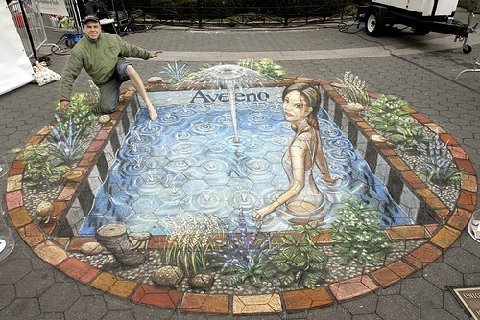 Drawn On A Flat Sidewalk With Colored Chalk.
TEXAS BEER JOINT SUES CHURCH..... In a small Texas town, ( Mt. Vernon ) Drummond's bar began construction on a new building to increase their business. The local Baptist church started a campaign to block the bar from opening with petitions and prayers. Work progressed right up till the week before opening when lightning struck the bar and it burned to the ground. The church folks were rather smug in their outlook after that, until the bar owner sued the church on the grounds that the church was ultimately responsible for the demise of his building, either through direct or indirect actions or means. The church vehemently denied all responsibility or any connection to the building's demise in its reply to the court. As the case made its way into court, the judge looked over the paperwork. At the hearing he commented, 'I don't know how I'm going to decide this, but as it appears from the paperwork, we have a bar owner who believes in the power of prayer, and an entire church congregation that does not...
The Tombstone Hearse (and Bridal Coach) Company
While Tombstone Hearse Company in
Bedford, PA initially conceived the units as an alternative transportation vehicle that would cater to the families and loved ones of the over 11 million motorcycle enthusiasts, we are excited to find that funeral directors state that a large percentage of clients using the motorcycle hearse have never even ridden a motorcycle.
Expanding on this base, Tombstone Hearse Co. has become a prime choice for many Military and Police funerals and surprisingly even grandmothers due to the dignity and honor the hearses provide
"The Bridal Carriage" is the only grand entrance you will ever need. A unique, special and luxurious way to travel on the most magical day of your life!
|
|
|

